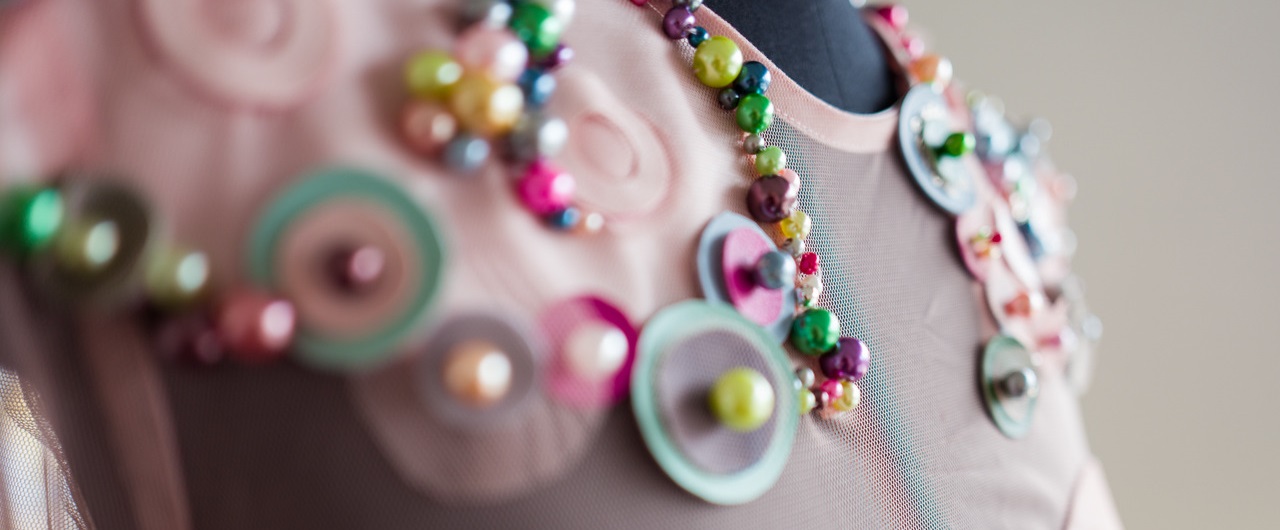Tulle, conductive thread and 200 LEDs

In summer 2016, Martha Berwanger received an unexpected enquiry. An employee at IBM called to ask whether Martha would be interested in designing a dress with artificial intelligence in cooperation with the global IT giant. The team had become aware of her work through a recent showcase event at HTW Berlin. The university organises regular exhibitions for its design students to present their projects to the public. Currently in her fourth semester, Martha exhibited a jacket that she had developed for people with Down syndrome. With the aid of a sensor, the jacket lights up in the dark to increase the safety of the wearer when they are near roads. As people with Down syndrome can often feel uncertain in traffic situations, it is important for other road users to be aware of them.
This new development which combines electronics and high-tech materials in clothing is called “fashiontech”. Potential applications include monitoring physiological functions, producing energy or increasing visibility. IBM has decided to get involved in this up-and-coming industry. At the 2016 Met Gala, a prestigious charity event in aid of the Metropolitan Museum of Art in New York, IBM and the fashion label Marchesa presented a dress that changed colour according to the mood in the room. The dress is based on the “Watson” artificial intelligence system developed by IBM. It filters the audience’s emotions from their Twitter posts and transforms this into a colour scheme made visible by hundreds of LEDs sewn into the garment.
IBM is showcasing a similar dress based on the same technology at CeBIT 2017, the leading trade fair of the IT industry. However, this time the dress was not designed and produced by an international fashion company but by a fashion design student at HTW Berlin. “I was completely surprised, but immediately said yes,” says Martha, recalling the moment when she took the call from IBM. She developed three different designs and IBM selected one of them. The production phase began in February. “Some of the work was extremely fiddly,” says Martha. In addition to the usual finishing of the fabric, over 200 LEDs had to be sewn into the mermaid-style pink tulle dress. Around 180 metres of conductive yarn had to be used to conduct the electrical current between the LEDs. Thanks to this special thread, she was able to design a figure-hugging dress. This would have been impossible with conventional wire, which is only suitable for voluptuous princess-style dresses.
To accomplish the task, Martha had a lot of support from her fellow students. “In the two weeks prior to the deadline, there were usually ten of us working on the dress at the same time,” she explains. Integrating the LEDs into the dress was a particular technical challenge. Fortunately, her roommate’s boyfriend is very knowledgeable about installing lights and was happy to help out. The last step was to add a small pocket to hold the power bank that supplies the LEDs with energy.
“The project was incredibly interesting and I really learned a lot,” says Martha. Not only will the dress be on display at CeBIT in Hanover, it will also be worn by a model numerous times a day. Martha Berwanger will also be there for part of the fair. She will then return to concentrating on other projects again. For her Bachelor’s degree project, she wants to continue doing work for people who have Down syndrome. Their different body measurements often make it difficult for them to find clothing that fits properly. She is planning to design a wedding dress and suit for a couple with Down syndrome. After that, who knows where the next phone call from a potential customer will lead to…